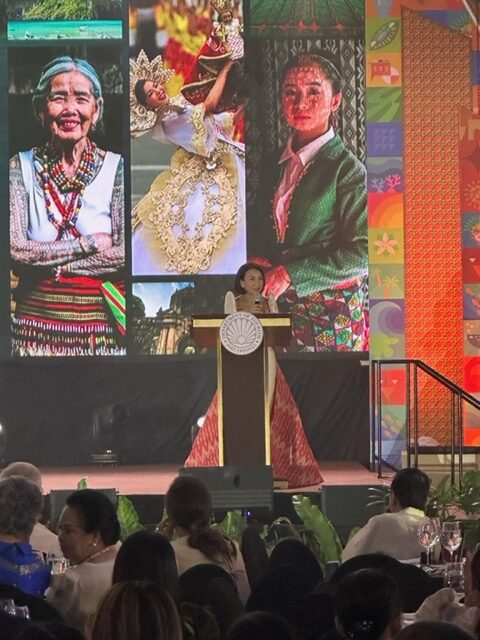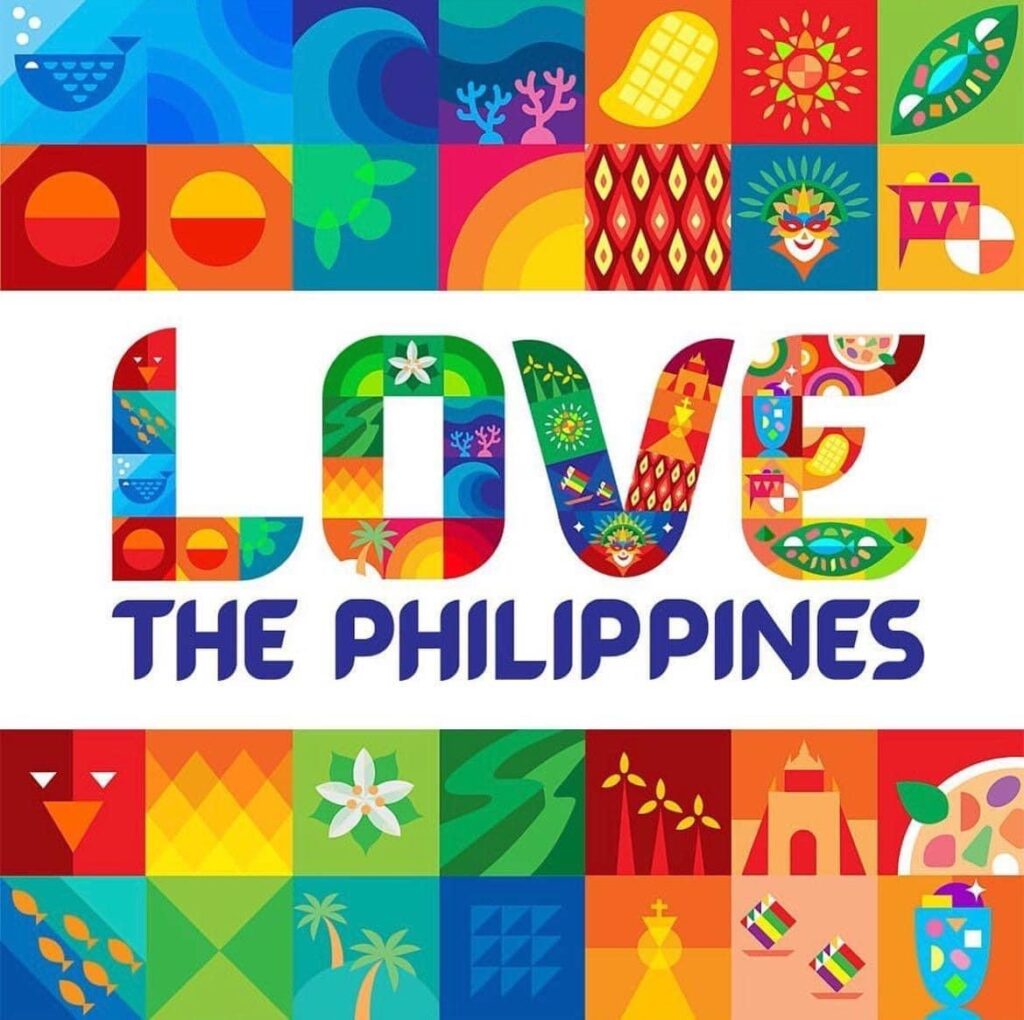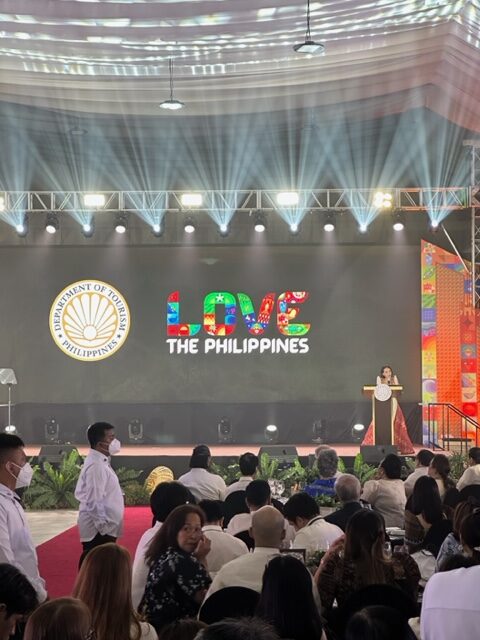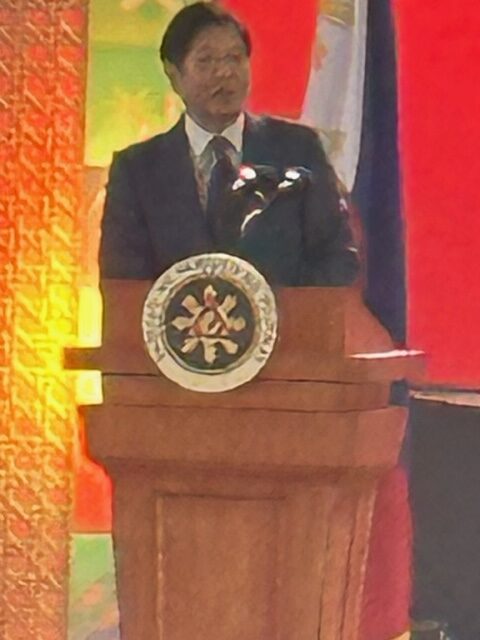The Department of Tourism (DOT), under Secretary Christina Frasco, recently marked the 5Oth year since its founding by the first Marcos administration in 1973. At the same time, Frasco also revealed her office’s new thrust to attract more tourists to the country with the slogan “Love the Philippines.”
By Alex Y. Vergara
Love the Philippines?
At first blush, the recently unveiled slogan of the Department of Tourism (DOT) to attract foreign as well as local tourists to spend their holiday dollars and pesos in the country sounds like an appeal, even a plea. But according to Tourism Secretary Christina Frasco during a recent press conference on the sidelines of the DOT’s 50th anniversary celebration at The Manila Hotel, Love the Philippines is a “call to action.”
Addressed to every Filipino, that call, she said, is “not a mere branding campaign,” but also a reminder “to remember the beauty of our country, to honor our past, and to look forward to the future armed with the virtues and values of being Filipino, and armed with the knowledge of how blessed we are as a nation.”

At the same time, the slogan, part of the multi-million peso campaign created by DDB Philippines for the DOT, is the country’s “love letter to the world and a reminder of how much the world can gain from loving us back,” Frasco added.
Frasco also took pride for earlier coming up with a “particular font” that she says is unique to the country’s tourism effort. That same font, although stylized with the incorporation of bold fiesta colors and touristic icons like windmills, mangoes and halo-halo, was used to form the words Love the Philippines.
But the DOT is not completely abandoning the “fun” aspect of Philippine tourism, said Frasco, referring to the highly successful and viral “It’s More Fun in the Philippines” campaign, which began during the term of the late Tourism Secretary Ramon Jimenez, Jr.
“We will continue to market the Philippines as fun all over the world, but we will also articulate that the Philippines has so much more to offer in addition to fun. That’s why we are honoring [the country’s] culture, history, heritage, our people, our flavors and all out other tourism offerings,” she added.
Believe it or not, despite the seeming success of the “It’s More Fun in the Philippines” campaign, a DDB Philippines executive, basing her observations on certain “metrics,” said that the word fun didn’t resonate as much with foreigners. She revealed DDB’s findings during her speech about the “changed traveler” at the DOT’s anniversary celebration, which was graced by President Ferdinand Marcos Jr.
Also gracing the milestone event were a number of Cabinet secretaries and legislators, including Transportation Secretary Jimmy Bautista and Deputy Speakers Duke Frasco and Camille Villar. The tourism secretary also honored her predecessors at the tourism department. Among those who graced the event were Gemma Cruz Araneta, Sen. Dick Gordon, Wanda Teo, Narzalina Lim and Mina Gabor.
Frasco also announced during the press conference the launch of Travel Philippines, a tourist lifestyle app, in partnership with the Tourism Promotions Board. Its main aim is to provide tourists, both foreigners and Filipinos, wherever they are in the world with information “at the tip of their fingers.”
Since it’s an experience-based app, it can curate experiences that resonates with you by telling you which particular region you can go to. “If, for example, you’re interested in surfing, you just have to click on that particular tourist experience and it will show you all the regions, municipalities and provinces that offer that particular tourism product,” Frasco said.
The app, which simplifies the interface between consumers and tourism stakeholders, even goes further by providing opportunities to the country’s travel agencies, tour operators, even tour guides by connecting them directly with tourists.
The DOT is also in the process of broadening its digital platform by partnering with Grab Philippines and GCash. The Grab app, for instance, will give these various tourism stakeholders a platform where tourists could connect with them when they book their tours. The partnership with GCash, meanwhile, will provide accredited tourism enterprises with a platform for digital payments.
During a speech she made earlier, Frasco declared that the country has already welcomed 2.62 million international visitors as of June, almost the same number of foreign travelers to the country – 2.65 million – for the entire year of 2022. She also thanked fellow Filipinos for supporting domestic tourism. The combined interisland trips made by local tourists last year resulted in an estimated P1.5 million in tourism revenues.
“This has in turn contributed to 6.2 percent of our Gross Domestic Product. Overall, the Philippines in 2022 has generated no less than P1.87 billion in tourism revenues,” she said. After more than two years in the doldrums because of the pandemic, tourism in 2022 has provided employment an estimated 5.35 million Filipinos in various sectors of tourism.
Without a doubt, the trajectory as far as the number of tourists and revenue generated from tourism is on an upward trend for the rest of the year. It remains to be seen though how much this new thrust of banking on a universal albeit generic word like “love” to market the Philippines to the rest of the world would contribute to the country’s tourism efforts.









